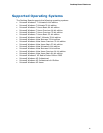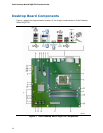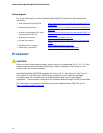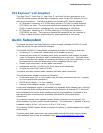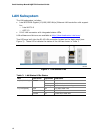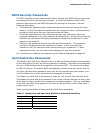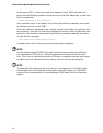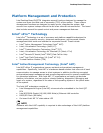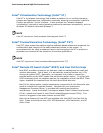Desktop Board Features
19
USB 2.0 Support
The board supports up to 14 USB 2.0 ports provided by two EHCI host controllers in
the PCH that allow the use of EHCI-compatible drivers.
The port arrangement is as follows:
• Six back panel connectors
• Eight front panel ports (four dual-port internal headers)
USB 2.0 support requires both an operating system and drivers that fully support
USB 2.0 transfer rates.
SATA Support
The board provides six SATA connectors through the PCH, which support one device
per connector:
• Four internal SATA connectors (black)
• One internal eSATA connector (red) for internal or external connections
• One eSATA connector on the back panel for external connections
The PCH provides independent SATA ports with a theoretical maximum transfer rate of
3 Gb/s per port. A point-to-point interface is used for computer to storage device
connections.
SATA RAID
The Intel Q57 PCH supports Intel
®
Rapid Storage Technology (Intel
®
RST) which
enables the following RAID (Redundant Array of Independent Drives) levels:
• RAID 0 - data striping
• RAID 1 - data mirroring
• RAID 0+1 (or RAID 10) - data striping and mirroring
• RAID 5 - distributed parity
Intel
®
Rapid Recover Technology (Intel
®
RRT)
The board incorporates Intel
®
Rapid Recover Technology (Intel
®
RRT). Intel RRT is a
feature of Intel RST. Intel RRT uses RAID 1 (mirroring) functionality to copy data from
a designated master drive to a designated recovery drive. The master drive data can
be copied to the recovery drive either continuously or on request.
When using the continuous update policy, changes made to the data on the master
drive while the recovery drive is disconnected or offline are automatically copied to the
recovery drive when it is reconnected. When using the on request update policy, the
master drive data can be restored to a previous state by copying the data on the
recovery drive back to the master drive.



